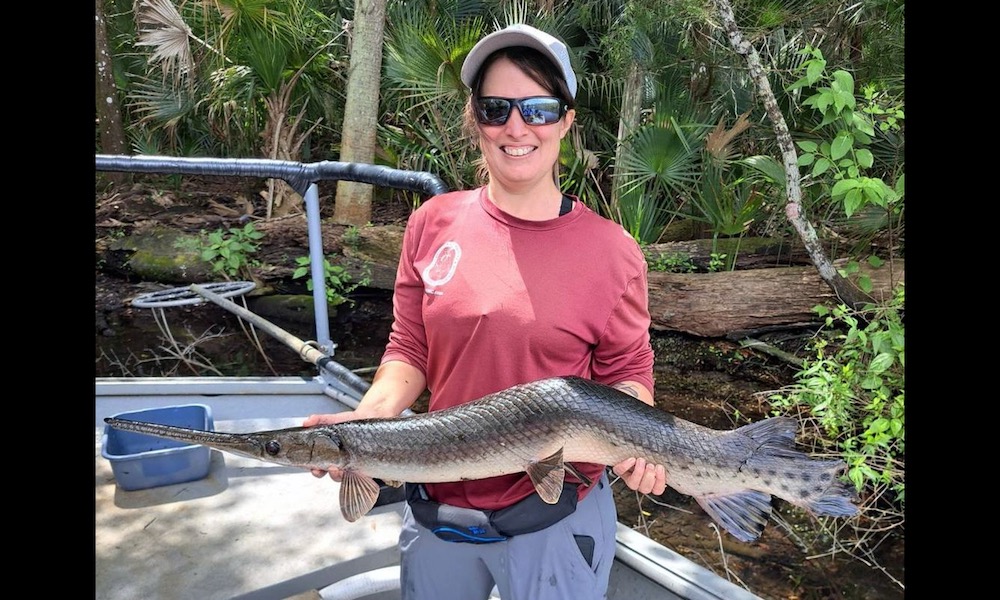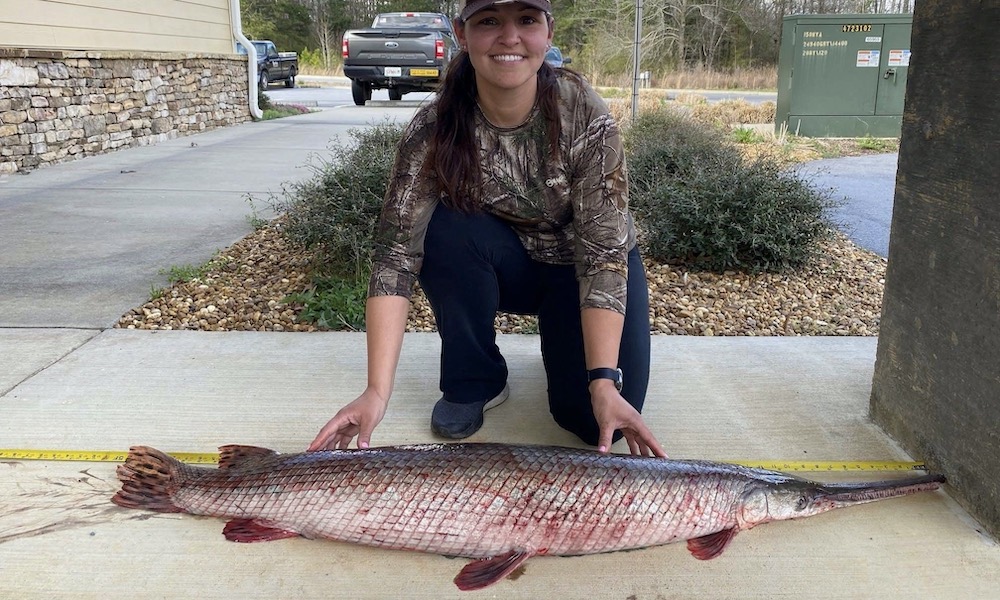Florida wildlife biologists conducting an electrofishing survey of Silver Glen Springs made an odd catch that resembled one from a few weeks ago.
The biologists captured a longnose gar that featured a distinct bend in the middle of its body.
“Unlike the bull shark with a spinal deformity that we shared a few weeks ago, this fish likely got its interesting shape from a spinal injury at some point in its life,” the FWC Fish and Wildlife Research Institute stated on Facebook.
The crooked longnose gar measured 2.7 feet and weighed over 10.6 pounds.
“With their razor-sharp teeth and armor-like scales, longnose gar may look scary, but they are no threat to humans, and they play an important role as an apex predator in many of Florida’s freshwater ecosystems,” the FWC Fish and Wildlife Research Institute stated.
While biologists caught the longnose gar in a net while electroshocking the waters of Silver Glen Springs, located between Jacksonville and Orlando, a fisherman caught the juvenile bull shark with the crooked body near Titusville, Florida, took photos and released it back into the water.
“The shark appears to have some form of scoliosis or spinal deformity affecting the vertebral column,” the FWC Fish and Wildlife Research Institute stated. “While the condition is rare, our team has encountered similar anomalies in other shark and bony fish species.”



